13 Types of Air Conditioners to Make Your Hot Days Cooler
Author: Omar Alonso | Editor: Omar Alonso
Review & Research: Jen Worst & Chris Miller

The types of air conditioners that you choose for your home depend on a lot of factors like the size of the home, energy consumed, the purpose of cooling, etc.
All air conditioners function with the help of two sets of metal coils and a refrigerant mixture. The mixture helps to transfer heat from one coil to the other.
Air conditioners can be standalone units with both coils inside one unit or split-system units where the coils are in different units—one coil inside a unit within the house and the other in a unit outside the house.
13 Types of Air Conditioners
Now that we know the basics of how air conditioners work, let’s take a look at 13 different types of air conditioners you can choose from. There will be one that suits your living quarters, whether that's a house, an apartment, a recreational vehicle, etc.
Central Air Conditioner
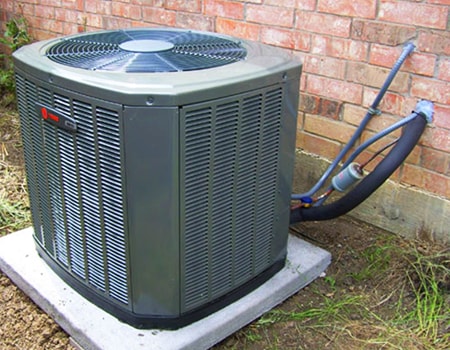
Also known as channel air conditioners, this is the most commonly used of the type of air con in the US. It is a split-system unit, where the air is regulated through a system of ducts installed inside the ceiling or walls, and the main compressor unit is located outside the house.
These systems are easy to operate, but setting them up can be a complex and costly affair. You need to enlist professional help to install a central air conditioning system as you cannot install these yourself.
These systems consume a lot of energy, but they are the most efficient solution for cooling large spaces. They also let you cool multiple spaces at the same time. Thankfully, in the United States at least, even the worst apartments have central AC units (unless you get some tiny studio space in NY).
Wall Mounted Ductless Mini-Split
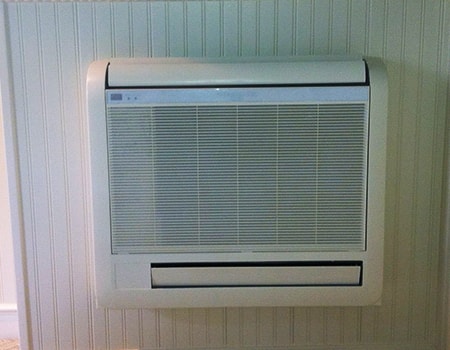
The aircon types are smaller and compact split-system conditioners and they usually have two parts—a condenser that is installed outdoors and an evaporation unit installed indoors.
These compact blower units or evaporative units are mounted on walls, and they are connected to the condenser using pipes instead of ducts. Since the condenser or compressor is installed outdoors the system is much quieter than standalone units.
An advantage that split systems have over centralized air conditioners is that they can cool different rooms at different temperatures since each unit has a separate thermostat.
However, installing mini-split alternatives to central air in each room might work out to be more expensive in the long run than getting central air conditioning.
Floor-Mounted Column Air Conditioner
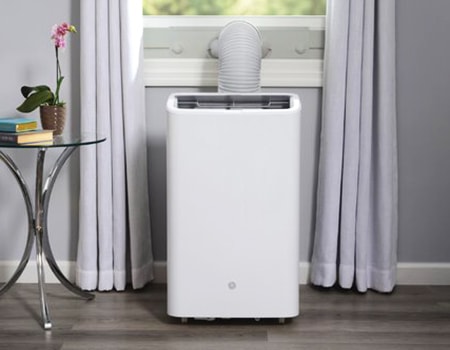
Ductless split-system air conditioners can be mounted on walls as well as on floors. A floor-mounted column air conditioner is a high capacity unit mounted on the floor.
They are commonly used to cool large areas like lobbies, receptions, and waiting areas since they produce a strong outflow of air. Because of the large capacity of air being cooled using these air conditioner types, it's better not to maintain proximity to the unit when it is on.
Floor-Mounted Cabinet Air Conditioner
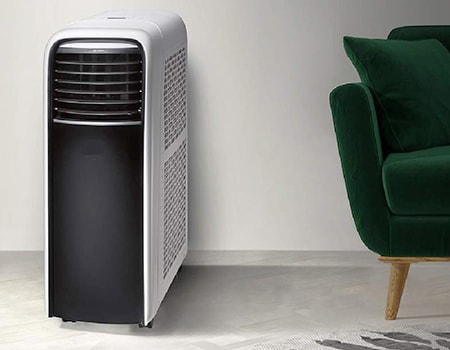
These floor-mounted systems are smaller units that are approximately the size of a kitchen cabinet. They are ideal for cooling smaller spaces.
But they need to be installed by refrigeration engineers since it involves a lot of pipework and cabling. Doing it yourself and doing it wrong can mean leaks, loss of efficiency, and even electrical problems.
Window Air Conditioner
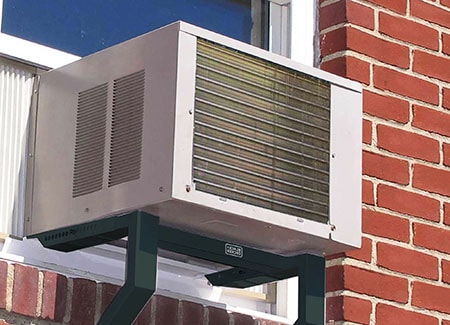
They are also known as through-the-wall air conditioners. They are mounted in an open window or through a wall that is no thicker than 9 inches. Thick walls restrict airflow and prevent your air conditioner from working efficiently.
These are standalone types of AC units that use an exhaust system to suck the hot air out of the room and circulate cool air inside. They are suitable for cooling single rooms and smaller areas.
The controls are usually on the unit itself, although some models do come with a remote. These systems have removable filters that need to be cleaned regularly, just like ceiling fans, but these still make great ceiling fan alternatives.
Since they are a single unit they tend to be noisier than split systems. The advantages of getting a window air conditioner are that they are easy to install and more cost efficient.
They're great for cooling the specific room you're spending time in, but depending on your types of blinds, you won't be able to lower them all the way and will need another method to ensure your privacy.
Portable Air Conditioner
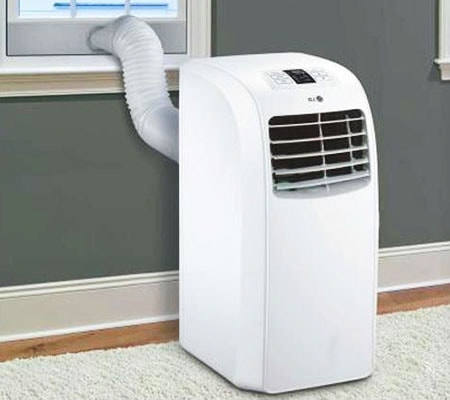
These types of air conditionors are also standalone units like a window AC unit with all the components inside one device. The difference is that these units can be moved from room to room, all you need is a power outlet and access to a window.
These portable systems have a funnel or a flexible air pipe that can be connected to any window to remove the hot air from the room.
They are suitable for small spaces like kennels or bathrooms as they don’t need to be installed permanently. They are easy to move from one room to another since they usually have wheels to make them portable.
The evaporator fan needs to be on all the time and needs to evaporate the condensed moisture, since it doesn’t really have an outlet. What's nice is you don't end up with mystery problems like no electricity power flowing to your thermostat, since you can see if it's plugged in or not.
Hybrid Air Conditioner
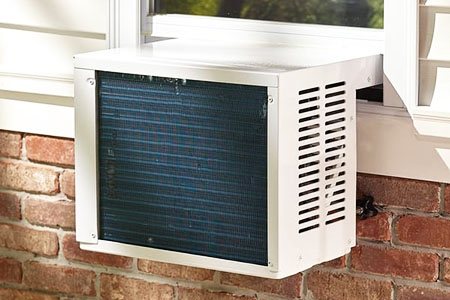
Hybrid ACs are also known as Dual Fuel air conditioners as they combine a gas furnace and an electric air-source heat pump. The system automatically switches between the different power sources depending on the temperature outside.
Some newer hybrids switch between electricity or geothermal and solar power, too. They can be mounted to a slab or in a window. They're very versatile.
You can program into the system the temperature at which the switch has to be made or you can manually switch the sources.
Generally, the heat pump is used to heat or cool the home. When the temperature drops too much that the pump cannot heat the room efficiently, the furnace kicks in. They can have various types of furnaces too so do your research.
Although it is costlier to install a dual system, they save more energy and cost less in the long run. These are fairly sophisticated air conditioner types, but not so much as the next below.
Smart Air Conditioner
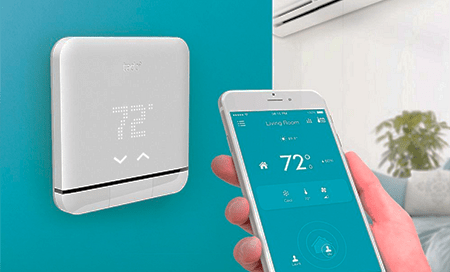
Smart air conditioners maintain home temperatures using smartphone apps. These air conditioners are connected to the internet and the usage is monitored using the app.
They can also be connected to smart home systems or voice assistants. Such systems help lower energy consumption.
They have several advanced features, including automated modes that help track the temperatures outside and adjust cooling accordingly. You can even set your preferences to maintain an ideal environment in your homes.
Spot Cooler Air Conditioner
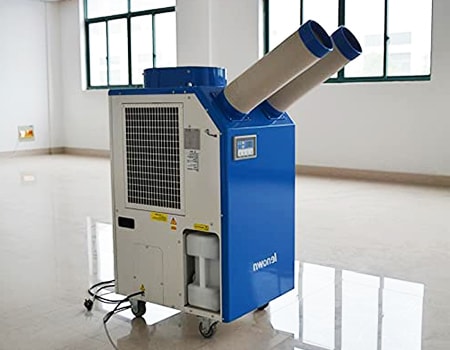
Spot coolers are big units that have an almost industrial cooling capacity. They're typically used to cool boats, ships, or even airplanes.
They come as a standalone unit but unlike the traditional standalone systems, the entire unit is positioned outside the room that needs to be cooled—two or more pipes go inside the room to suck out warm air and circulate cold air.
Geothermal Air Conditioner
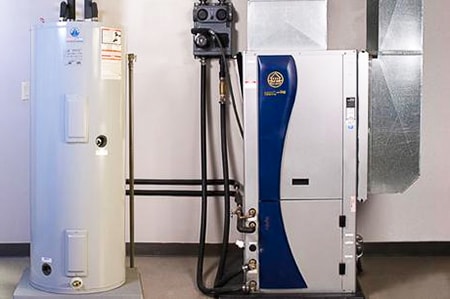
Geothermal air conditioner types are one of the latest innovations in air conditioning systems. It is a system that uses the earth’s temperature to regulate the cooling inside your homes.
The temperature of the earth four to six feet underground remains the same all year round despite changing weather, this insulating property is used to cool or heat your homes depending on the weather outside.
A geothermal air conditioner needs the installation of an elaborate piping system. This system—called a loop or earth loop— is located underneath your home and circulates water from your home to the earth and vice versa.
In winter, water absorbs heat from the earth. In summer, heat from the water is absorbed into the earth. These systems are more sustainable than other alternatives, since fossil fuels are not burned to generate heat as heat is transferred to and from the earth.
Swamp Cooler Air Conditioner
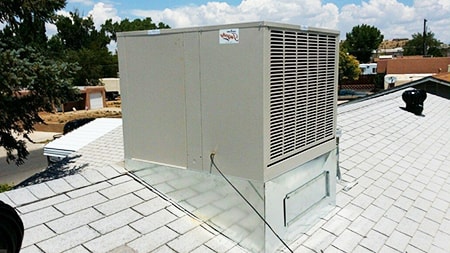
Swamp coolers are also known as evaporative coolers. These types of air conditioners do not use refrigerants to cool down the room, they only use air, water, and an evaporator fan. Evaporator types of fans are used to cause excess moisture to evaporate into the surrounding air.
They work best in hot and dry climates that allow maximum evaporation to take place. They are not ideal cooling systems for humid locations as these coolers also function as humidifier alternatives which increase the humidity in an already humid location.
Swamp coolers are a sustainable alternative to traditional cooling systems. They consume less energy, don’t use refrigerants and don’t release carbon dioxide into the air.
Packaged Terminal Air Conditioner
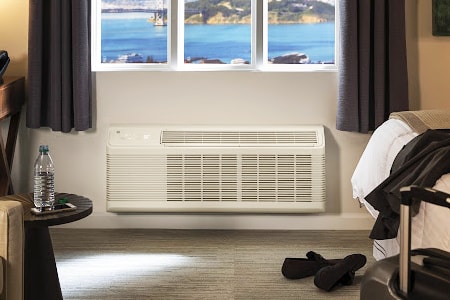
PTAC systems are commonly installed in commercial spaces like hotels or hospitals and also in renovated buildings.
They are also known as wall-split air conditioning systems. Unlike wall air conditioners the PTAC has two separate units connected through an opening in the wall between the units.
They are ideal for cooling single rooms. But they can also be used as a supplementary cooling unit within a centrally air-conditioned space.
Some rooms might be hotter than others, so installing a PTAC will ensure that you don’t have to crank up the cooling in all the rooms just to cool down one room.
They are installed through the walls, usually below windows and close to the floors, with the exhaust port facing outside. They are different from central air conditioning systems because they are ductless, making them easier to install. Most PTACs can also function as heating systems.
Multi-Split Air Conditioner
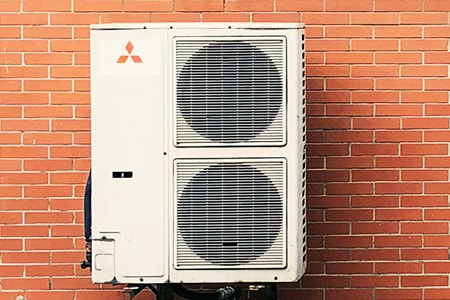
This is a split system that makes use of one external unit and multiple indoor units. Although it functions the same as a split AC unit, one outdoor system can be used to cool several rooms. This is possible because the external condenser is larger and more powerful than typical split systems.
Two to four internal units can be linked to one external unit. Each indoor unit can be operated separately, which means that you can adjust the temperature in each room according to your preference.
The main disadvantage of this system is that damage to the compressor will affect all the indoor units.
Types of Air Conditioners for Every Room
The overall cost of using particular types of air conditioners, the noise levels you are willing to tolerate, and the cooling capacity that you require will ultimately help you to zero in on the perfect types of AC units to suit your needs.



